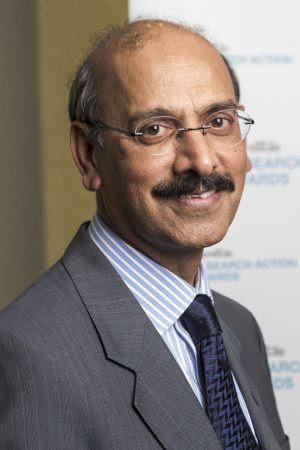
In this article, first published by The Mandarin, WHO Alliance for Health Policy and Systems Research executive director Dr Abdul Ghaffar says a shift in thinking toward “embedded research” could further bridge the gap between evidence and practice.

But governments and policymakers globally are beginning to realise that there is also much knowledge already available about the effectiveness of interventions that can potentially improve health systems — and it is not being widely used.
Think about vaccines, for example. We know our vaccines against tetanus, influenza or other potentially fatal diseases are effective and we know that we should aim to have least 90% of the target population vaccinated, but in many communities, uptake of these vaccines is poor. Here is a proven, effective intervention, but it is not being used because of systems and policy-level barriers.
Often, we know what works, but have not been successful in ensuring interventions are effectively integrated into systems or adequately scaled up.
Health policy and systems research looking at how to overcome barriers to making use of successful interventions is more relevant than ever as we face challenges including an ageing population, increased prevalence of chronic disease and rising healthcare costs.
There is an increasing demand for knowledge about strengthening health systems, but we need to change the traditional mindset around research to foster that demand.
A mindshift in the approach to research
Traditionally, the philosophy has been that researchers should generate knowledge and practitioners and policymakers should use it. But this does not take into account the realities of policy making.
You can’t have researchers outside the policy environment deciding on the research questions. Instead, it’s becoming clear that one of the keys to research having the greatest impact is actually embedding the research within the government or policy agencies.
There are several different ways that organisations around the world are going about embedding research. Some agencies commission outside researchers to come in and look at ways of solving problems. Another model being used in many parts of the world is for governments to establish an organisation outside the ministry, at arms’ length, that has the expertise to do research. When a problem is identified at system level, that organisation is approached and they look into it. That can work well, provided there is a high level of trust and expertise.
The third way of embedding research is to have a researcher actually working within the policy team, who can look into the barriers to successful implementation of interventions or policies, and deliver answers in the timeframe imposed by policymakers’ budget cycles, rather than publishing their findings in a medical journal in two or three years’ time.
Policy makers in the drivers’ seat
For embedded research to become a reality, we need a real shift in thinking. It means researchers share control of the research agenda, and policymakers or those implementing programs move into the drivers’ seat. Of course, there is some resistance to this from researchers, and if it is to work, we need to rethink how we assess research excellence and impact.
If you talk to researchers and ask them about excellence in research, they cite the impact factors of articles in medical journals. If you ask policymakers, they will talk about the value of research in terms of how it has solved the problem and helped to improve performance in the health system.
We need a major shift in thinking to bring these together, but it is happening slowly.
Investment, not expenditure
The other major challenge here is that it needs additional money. We need to see this type of research not as an expenditure, but as an investment, if governments are to get behind it and implement it at all levels: national, program and district levels.
Governments need to put a proportion their program funding towards embedded evaluation and research in order to look at how to overcome health systems barriers that create a hindrance to implementing interventions in full
The WHO Alliance for Health Policy and Systems Research is now supporting more than 60 projects in different parts of the world where research is embedded within implementation research projects.
Australia at the forefront of change
On my visit to Australia, it became clear that you are leading the way in terms of recognising and using health services research and embedding research in policy agencies.
I was struck by the commitment made by policymakers to use evidence and research to improve policies as demonstrated by the federal government’s new Medical Research Future Fund, which emphasise the importance of health service research.
I’m sure that if there was as ranking in the world of health systems research, Australia would be number one however, this remains a well-kept secret.
Researchers and policymakers need to spread the word about the work being done in Australia so that the international community can learn from your experience.
To help share our knowledge, we are establishing a new body called LEAP: Learning, Engaging and Advocating Policy research to bring together some of the key organisations in the field including the Sax Institute, Academy Health, the World Heart Foundation and Doris Duke Charitable Foundation.
This health systems research “network of networks” will meet annually to discuss better ways to use evidence and engage with policymakers, and help build on the momentum behind a move towards not just translational research, but transformative research.
Dr Abdul Ghaffar is executive director of the WHO Alliance for Health Policy and Systems Research which aims to promote the generation and use of health policy and systems research (HPSR) as a means to strengthen health systems. He visited Australia recently as a guest of the Sax Institute and was a keynote speaker at our Research Action Awards. This article first appeared in The Mandarin.
Find out more
- Read about our Research Action Awards winners





